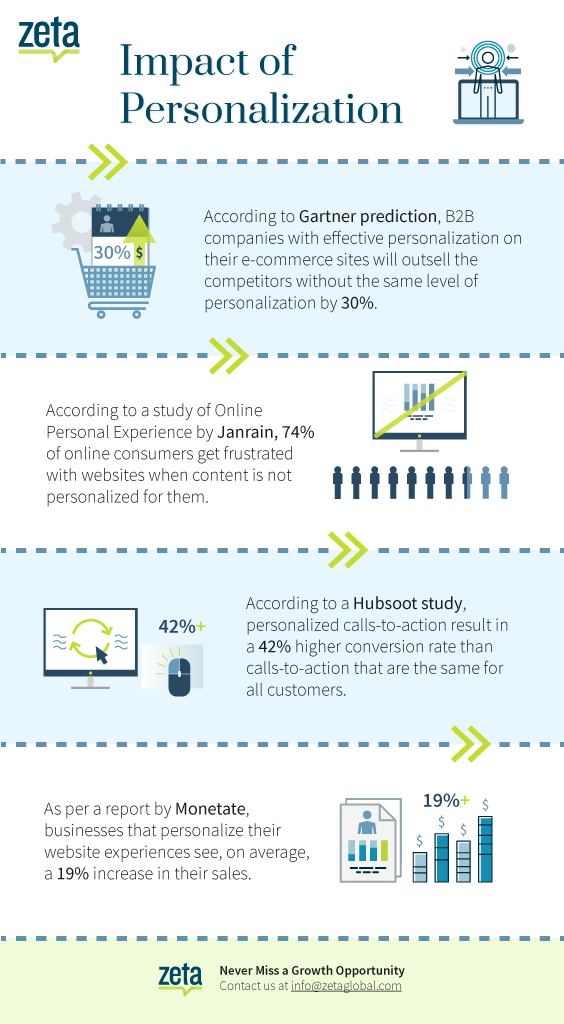
Articles | August 5, 2020 | 3 min read
What Is the Impact of User List Segmentation on Marketing Metrics?
To answer the question What Is the Impact of User List Segmentation on Marketing Metrics you need to first understand why user list segmentation is so powerful.
User list segmentation makes it possible to send personalized messages to prospects and customers across channels (especially email). As we’ve illustrated before, personalization is the key to modern marketing success. So, giving a business the ability to speak at a 1:1 level to a wide variety of customers leads to a number of benefits.

With list segmentation specifically, email marketers can separate recipients into focused buckets. Larger buckets use broader segmentation qualifiers (geography, gender, age, etc.) while smaller buckets follow more nuanced parameters (personal interests, transaction history, etc.). This is the cornerstone of user list segmentation impact, and why it can improve email marketing metrics (e.g. opens, clicks, etc.).
The age of the generic, mass-mailed email is approaching its terminus. As unread emails pile up and inboxes grow more cluttered, there isn’t any reason for recipients to engage with an email that isn’t catered to them.
That’s why brands looking to “up” their email marketing success pay such close attention to list segmentation. It’s the key to sending targeted emails with smart, customized messaging designed to really “click” with the recipients of a given list.
Even brands that own strong relationships with their customers and prospects must fend off attention-stealing attacks from competing brands across all channels. In email, that means using a catchy subject line, a compelling offer, sharp visuals, and sound body copy. Trying to tick all those boxes for a list that features thousands of diverse recipients is an exercise in futility. Fortunately, this is where the impact of user list segmentation becomes clear. By creating distinct recipient lists, it becomes easier for brands to develop variable copy that can meet the various expectations of recipients with different incomes, life experiences, expectations, needs, and wants.
Opens are great, but if email recipients don’t take a desired action (in other words, if they don’t click on your offer) is there any real benefit to the brand? Email is the blank canvas upon which smart, list-segmenting marketers paint their masterpiece, using different CTAs, templates, messaging, and more. In doing so, they not only achieve higher open rates, but they also see better click-through rates than their non-segmenting peers.
When a shopper buys a pair of jeans from Levis.com, they receive an email confirming their purchase. The chances are high that this email will be more than a simple “confirmation”—it will be an offer-laden communique with links to other products that are tied to their shopping history. Maybe the email will even contain a discount that can be applied to a future purchase.
Using behavioral-based list segmentation, Levis is doing more than sending a simple “thank you for your purchase” email—they’re subtly kicking off the next sales cycle. The confirmation email that’s automatically triggered when a purchase is made is designed to incorporate details of the recipient’s segmentation (e.g their previous purchases) to deliver a more compelling, eye-catching message that increases the likelihood of additional sales down the road.
Personalized content is relevant content, and relevant content is less likely to lead to the dreaded “unsubscribe” button. In terms of valuing the impact of user list segmentation, simply seeing fewer unsubscribes makes the juice worth the squeeze for many brands. (Added bonus—user list segmentation can lead to an increase in deliverability too since the email will be less likely to hit spam filters.)
With the right strategy and the right tools, you can leverage list segmentation and personalization to take your email marketing to the next level. Talk to the team at Zeta!
User list segmentation makes it possible to send personalized messages to prospects and customers across channels (especially email). As we’ve illustrated before, personalization is the key to modern marketing success. So, giving a business the ability to speak at a 1:1 level to a wide variety of customers leads to a number of benefits.

With list segmentation specifically, email marketers can separate recipients into focused buckets. Larger buckets use broader segmentation qualifiers (geography, gender, age, etc.) while smaller buckets follow more nuanced parameters (personal interests, transaction history, etc.). This is the cornerstone of user list segmentation impact, and why it can improve email marketing metrics (e.g. opens, clicks, etc.).
The impact of user list segmentation on email
The age of the generic, mass-mailed email is approaching its terminus. As unread emails pile up and inboxes grow more cluttered, there isn’t any reason for recipients to engage with an email that isn’t catered to them.
That’s why brands looking to “up” their email marketing success pay such close attention to list segmentation. It’s the key to sending targeted emails with smart, customized messaging designed to really “click” with the recipients of a given list.
Higher open rates
Even brands that own strong relationships with their customers and prospects must fend off attention-stealing attacks from competing brands across all channels. In email, that means using a catchy subject line, a compelling offer, sharp visuals, and sound body copy. Trying to tick all those boxes for a list that features thousands of diverse recipients is an exercise in futility. Fortunately, this is where the impact of user list segmentation becomes clear. By creating distinct recipient lists, it becomes easier for brands to develop variable copy that can meet the various expectations of recipients with different incomes, life experiences, expectations, needs, and wants.
Better click-through rates
Opens are great, but if email recipients don’t take a desired action (in other words, if they don’t click on your offer) is there any real benefit to the brand? Email is the blank canvas upon which smart, list-segmenting marketers paint their masterpiece, using different CTAs, templates, messaging, and more. In doing so, they not only achieve higher open rates, but they also see better click-through rates than their non-segmenting peers.
Better engagement
When a shopper buys a pair of jeans from Levis.com, they receive an email confirming their purchase. The chances are high that this email will be more than a simple “confirmation”—it will be an offer-laden communique with links to other products that are tied to their shopping history. Maybe the email will even contain a discount that can be applied to a future purchase.
Using behavioral-based list segmentation, Levis is doing more than sending a simple “thank you for your purchase” email—they’re subtly kicking off the next sales cycle. The confirmation email that’s automatically triggered when a purchase is made is designed to incorporate details of the recipient’s segmentation (e.g their previous purchases) to deliver a more compelling, eye-catching message that increases the likelihood of additional sales down the road.
Fewer unsubscribes
Personalized content is relevant content, and relevant content is less likely to lead to the dreaded “unsubscribe” button. In terms of valuing the impact of user list segmentation, simply seeing fewer unsubscribes makes the juice worth the squeeze for many brands. (Added bonus—user list segmentation can lead to an increase in deliverability too since the email will be less likely to hit spam filters.)
Want to learn more about the impact of user list segmentation?
With the right strategy and the right tools, you can leverage list segmentation and personalization to take your email marketing to the next level. Talk to the team at Zeta!


